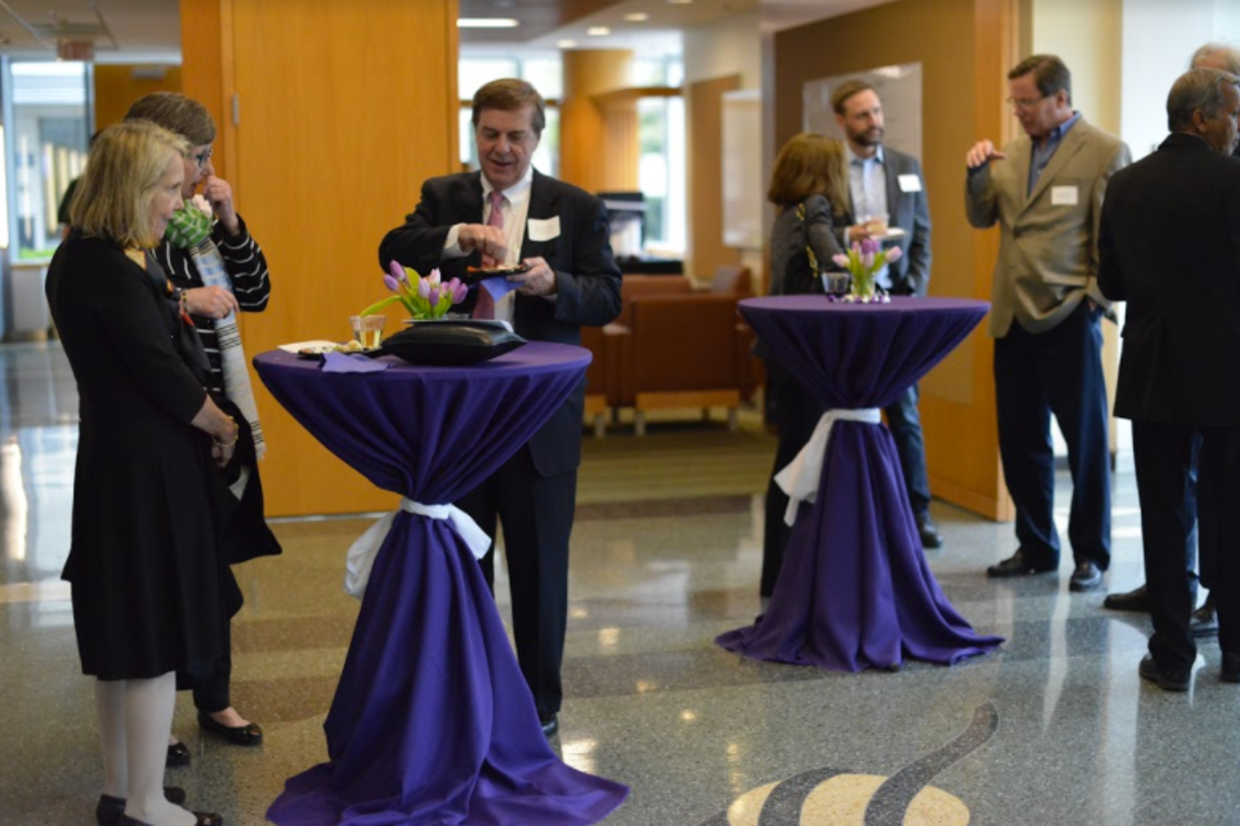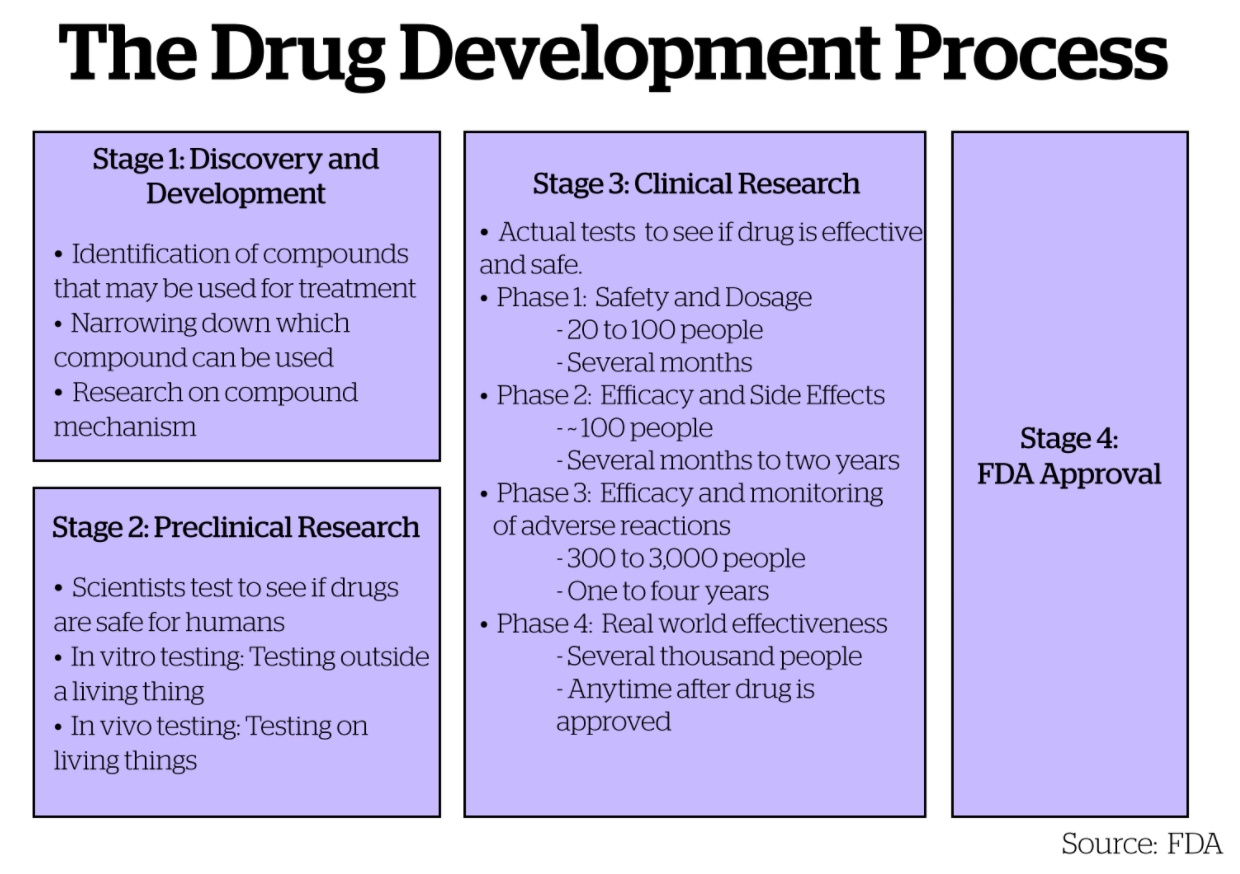
What happens when you get biochemists and entrepreneurs to work together? If you ask Dr. Thomas O’Halloran, the director of the Chemistry of Life Processes Institute (CLP), he’ll say, “It’s a win-win-win situation,” where researchers can get medicine to patients faster and more efficiently using an agreement called public-private partnership (P3), or an agreement between a public entity and a private corporation.
Scientists, CEOs, professors, researchers and administrators from across the Chicago area gathered at Abbott Auditorium in Pancoe Hall to talk about the progress in pharmaceutical public-private partnerships on Tuesday evening in a special forum titled “Accelerating Drug Discovery: New Approaches to Public–Private Partnerships.” Sponsored by The Center for Developmental Therapeutics in the Chemistry of Life Processes Institute and the Innovation and New Ventures Office (INVO), the event included speakers, notably Dr. Peter Schultz, the CEO and chemistry professor at The Scripps Research Institute, as well as a panel with researchers and entrepreneurs.
Traditionally, pharmaceutical companies discover and develop their own drugs, while universities do their own independent research. However, the drug development process is complicated and very expensive. While researchers can identify drugs that can be used as potential treatments, it can take years and an enormous amount of money to develop them and ensure they are safe, making it hard for a single organization to get a drug approved. While pharmaceutical research and development have grown substantially in the last decade, the amount of new drugs approved has not followed suit. With P3, private pharmaceutical companies can work with research institutions to facilitate research and the development process. For example, a research institution like Northwestern University receives public grant funding from government agencies and are expected to make discoveries, like new pharmaceutical treatments, to that can be used in the private sector. Universities can work with private companies to discover and develop a treatment that can quickly be used by the patients.

“In the academic environment, we create new knowledge and we're discovering whole new ways about how cells work and how molecules behave,” O’Halloran said. “That's called early stage in terms of the drug development discovery community. Public-private partnerships is the next stage where we can get [private sectors] to invest in some of these developmental processes. Otherwise, once a discovery is made, it could take 10 or 12 years and several hundred million dollars before it can come through.”
The forum was meant to raise awareness of this relatively new paradigm and to applaud the collaboration between researchers and entrepreneurs.
“I hope there is a realization that there are some extraordinary efforts across the country starting in academic institutions to do very high level drug discovery and development,” O’Halloran said.
There are, however, certain challenges in creating successful partnerships, mostly related to how new the P3 model is.
“One of the biggest challenges [INVO] is actively working on is to try to figure out the touch points from each organization within the university so we all have a united front,” Dimitra Georganopoulou from INVO said.
In addition, the idea of P3 only recently emerged, making it hard for universities like Northwestern to use the model. “It's somewhat of a new paradigm,” Actuate Therapeutics CEO Dan Schmidt said. “You've got universities moving discoveries towards development and industry coming back to universities. Universities can only take it so far – it's a teaching institution, and it's a real challenge to find where the university continuum stop and where the private company starts.”
That's where organizations like CLP and INVO can come in. CLP plays a major role in helping researchers across NU prepare for clinical trial, and INVO facilitates the growth of companies coming out of Northwestern by connecting them to investors and business talents.

The 60 attendees consisted of graduate students, post-docs, technical staff, CEOs, researchers, business owners and professors who came to learn about successful P3s.
“I was interested in learning more about public-private partnerships, but I also came to network and be introduced to Northwestern people,” said Joel Harris of Charter Oak Creative, a non-traditional entrepreneur startup consulting in Chicago. Harris was among the others who attended the reception before the forum.
Most attendees left impressed by Dr. Schultz’s presentation and the panel discussion.
“It was a worthwhile discussion,” said Nancy Tyrrell, a business developer at Shamrock Structures, a protein crystallography research services company in the West Suburbs. “It’s important for universities to work with small companies to bring innovation and to catalyze new discoveries.”